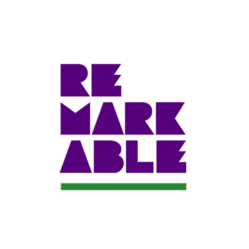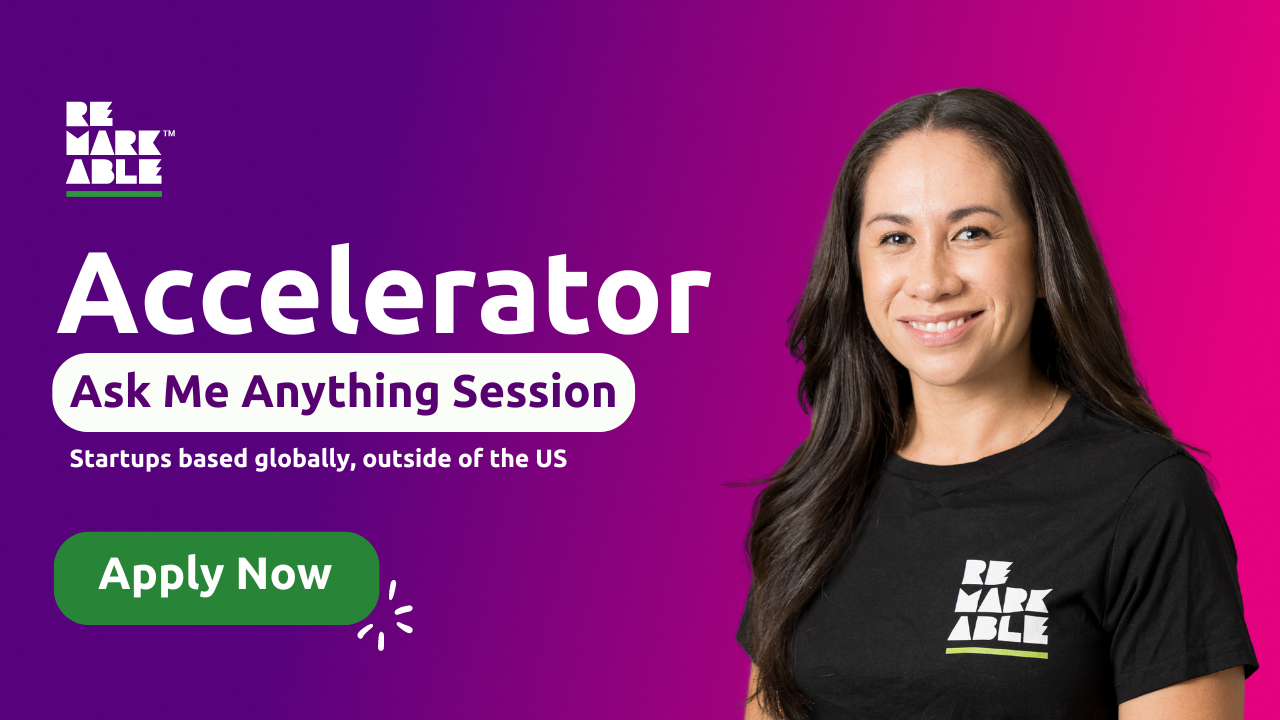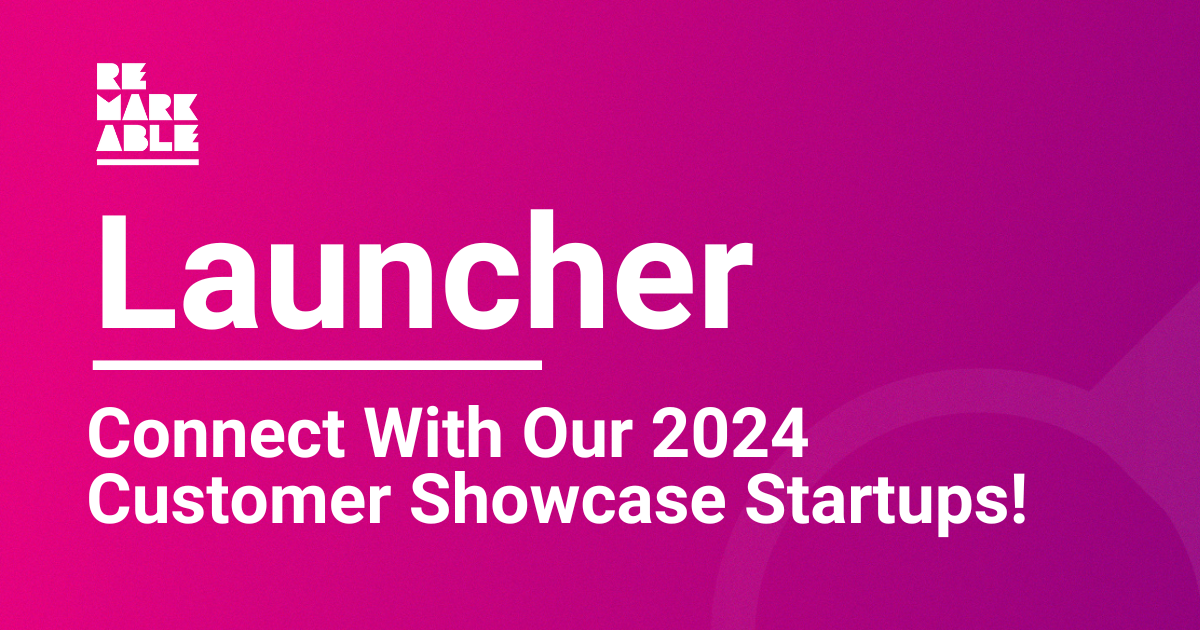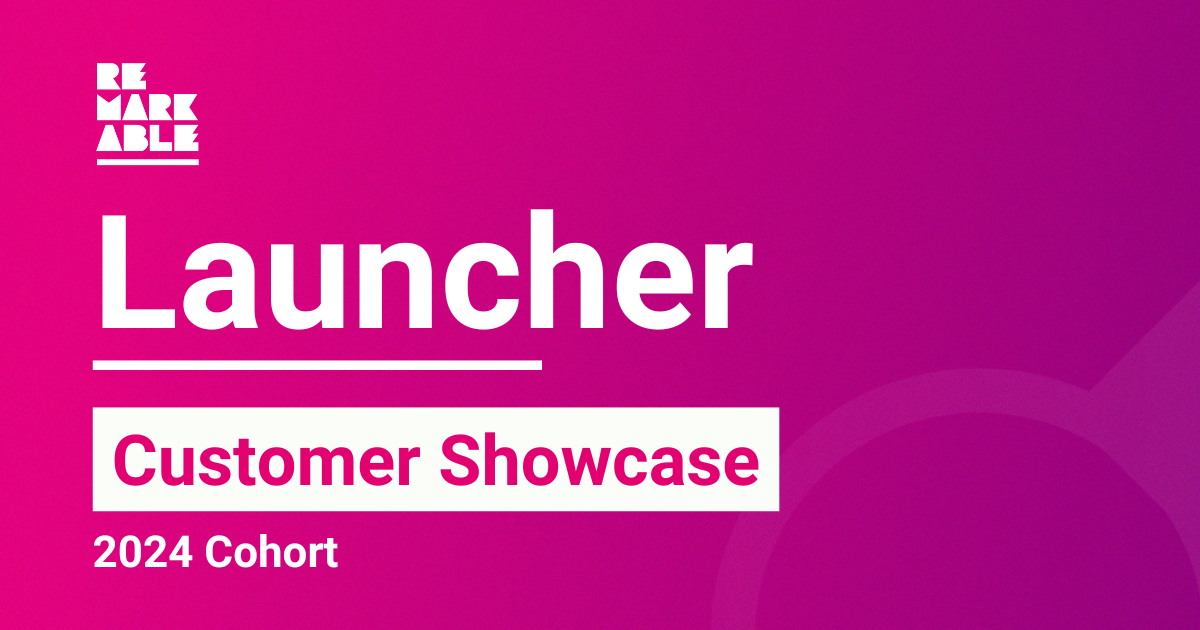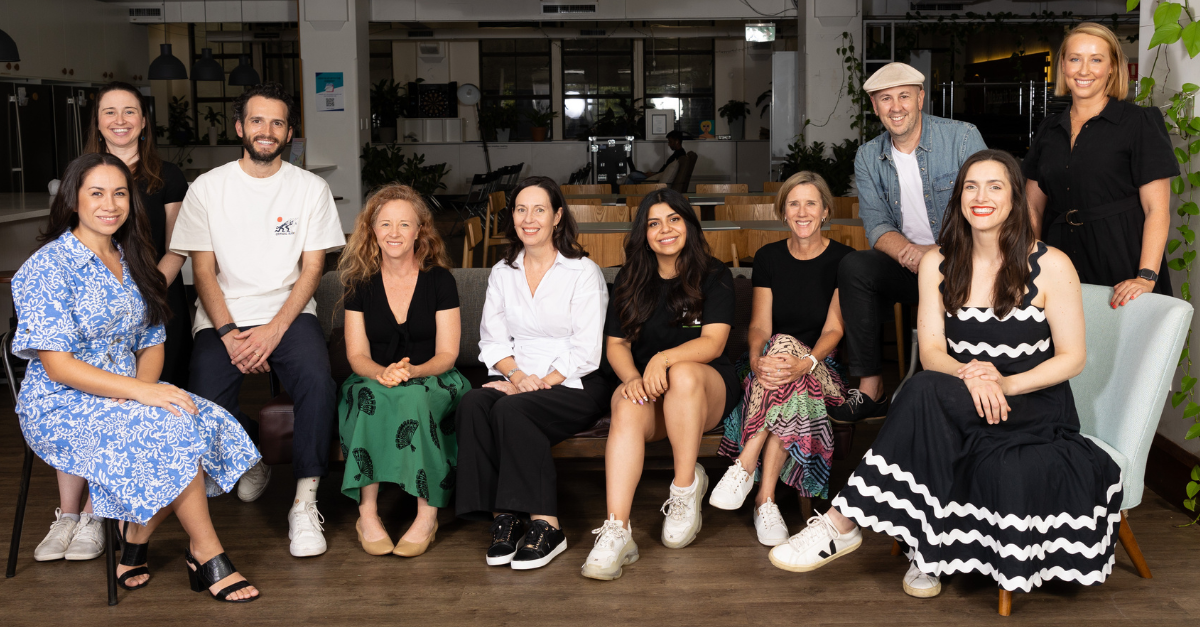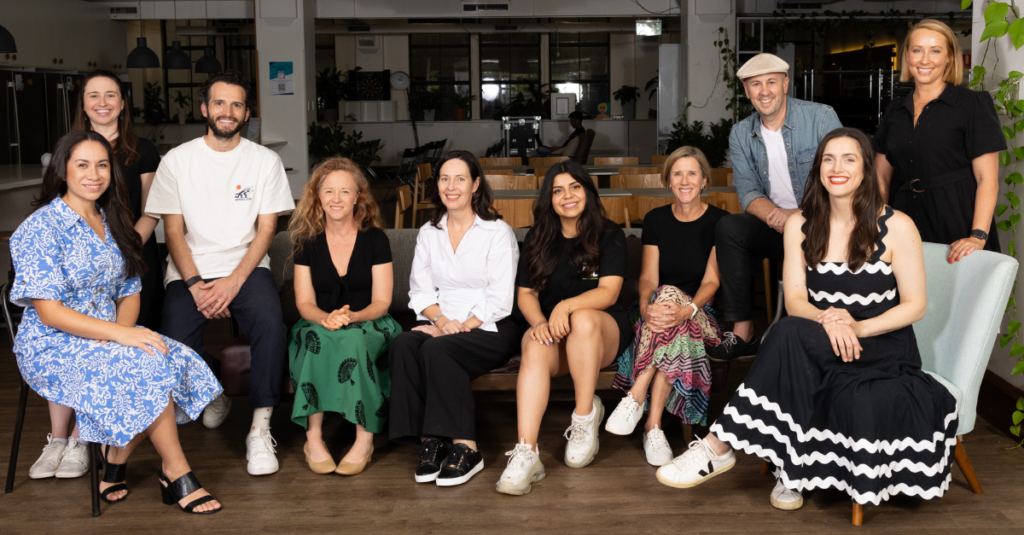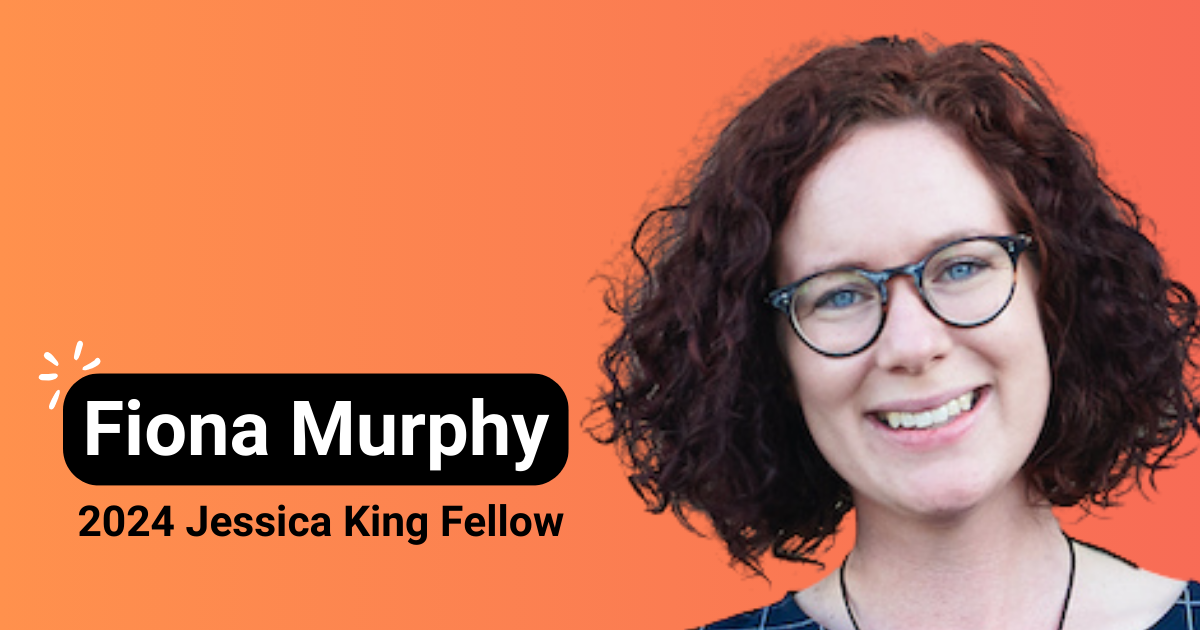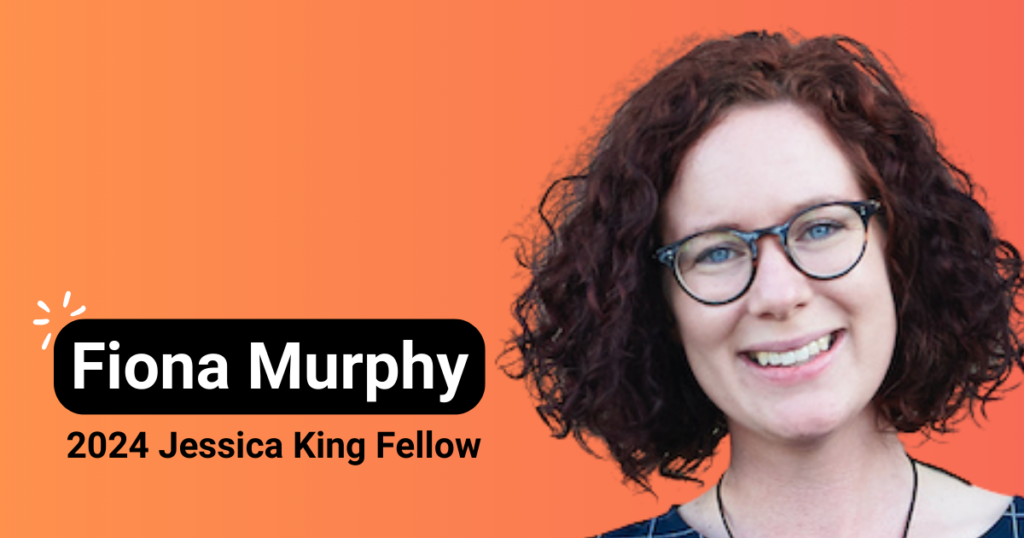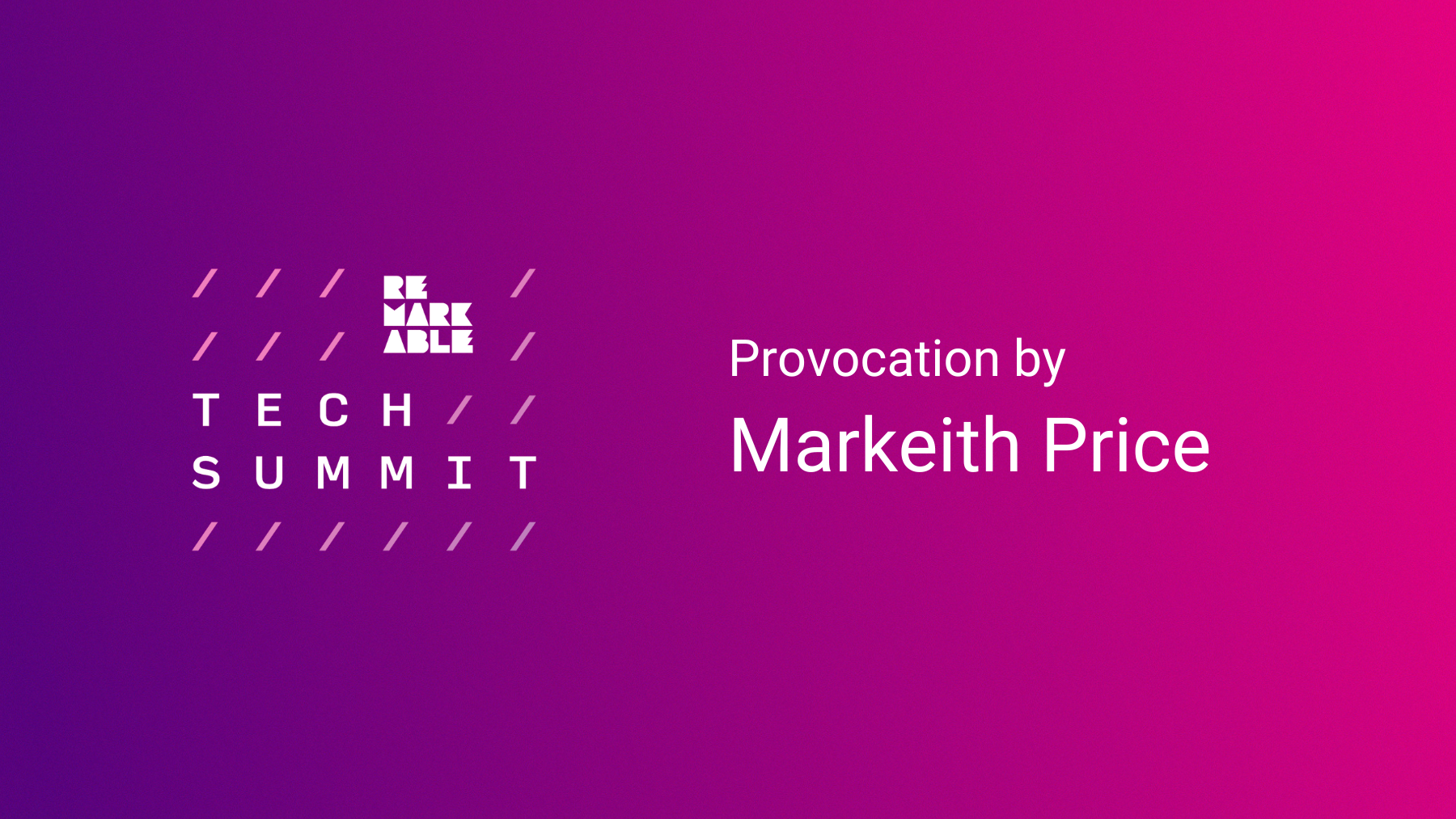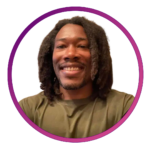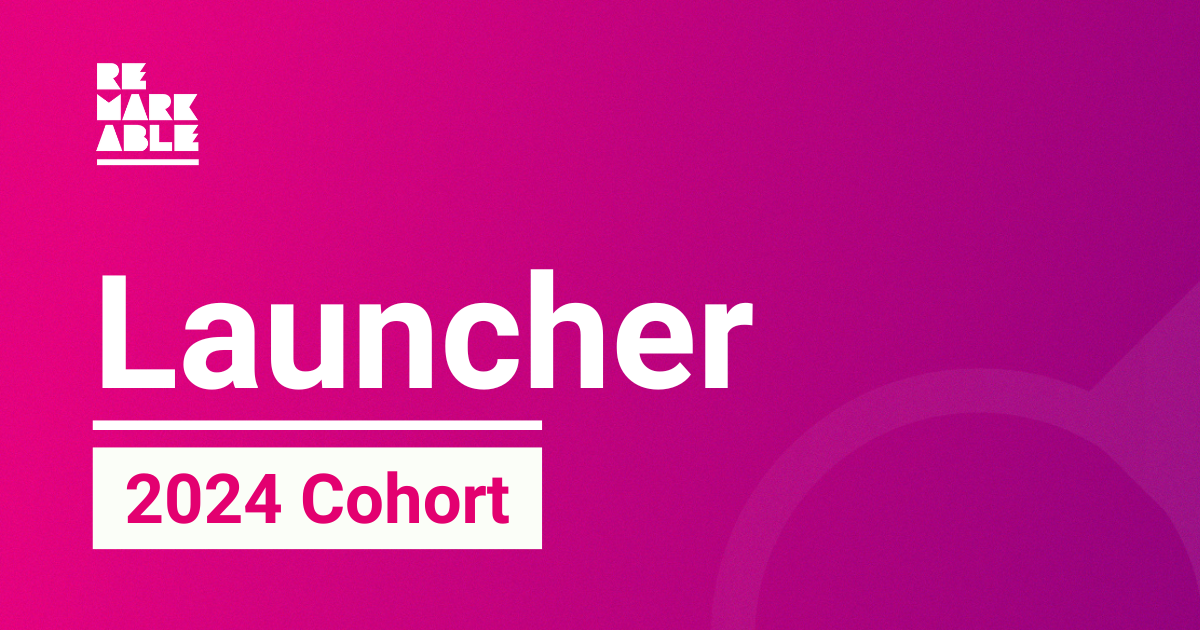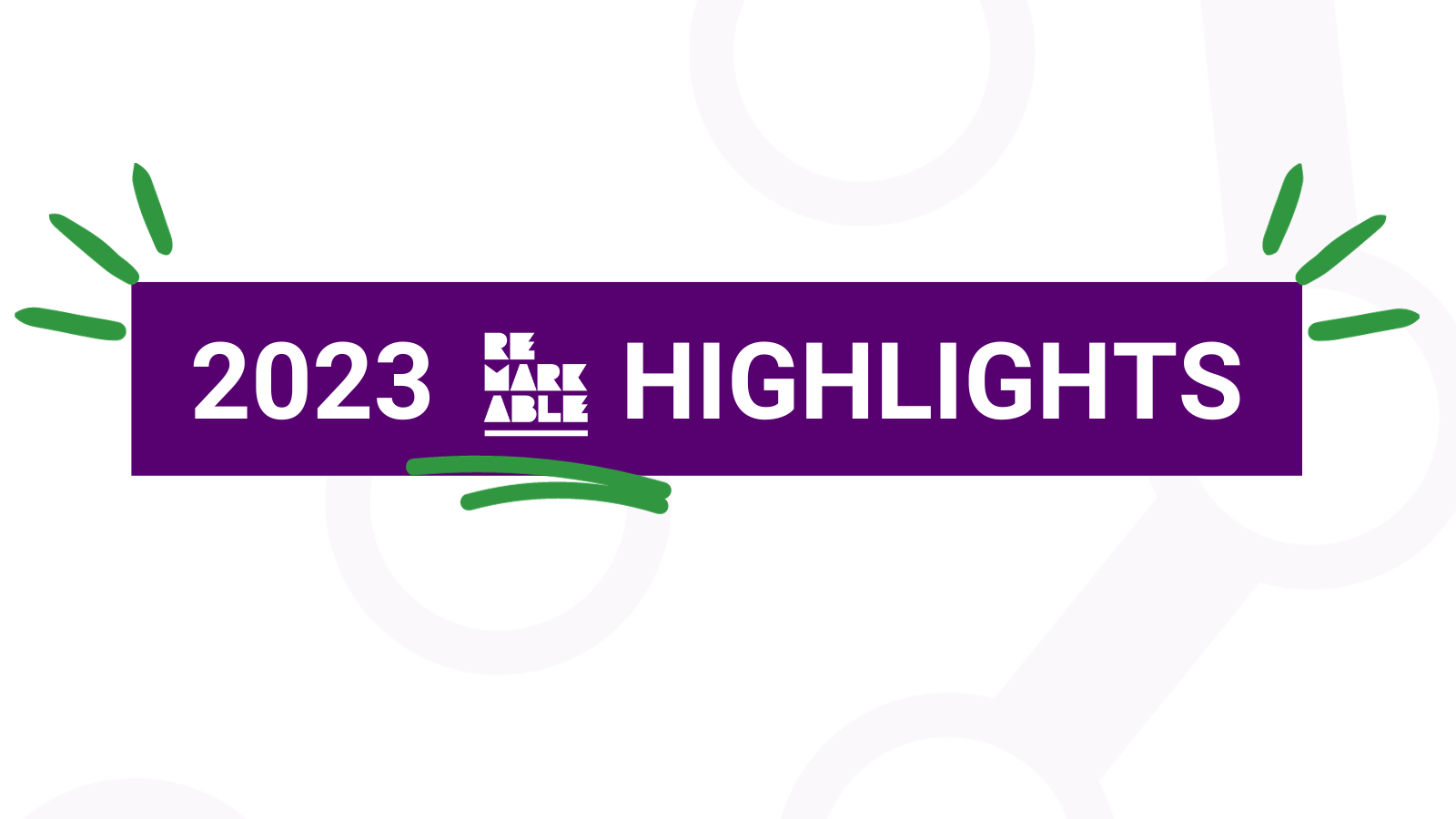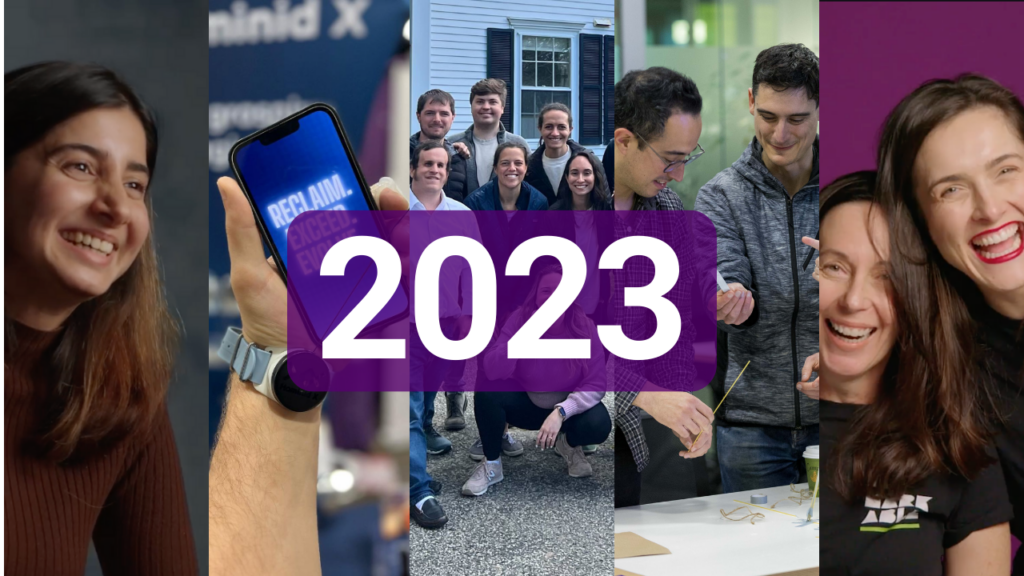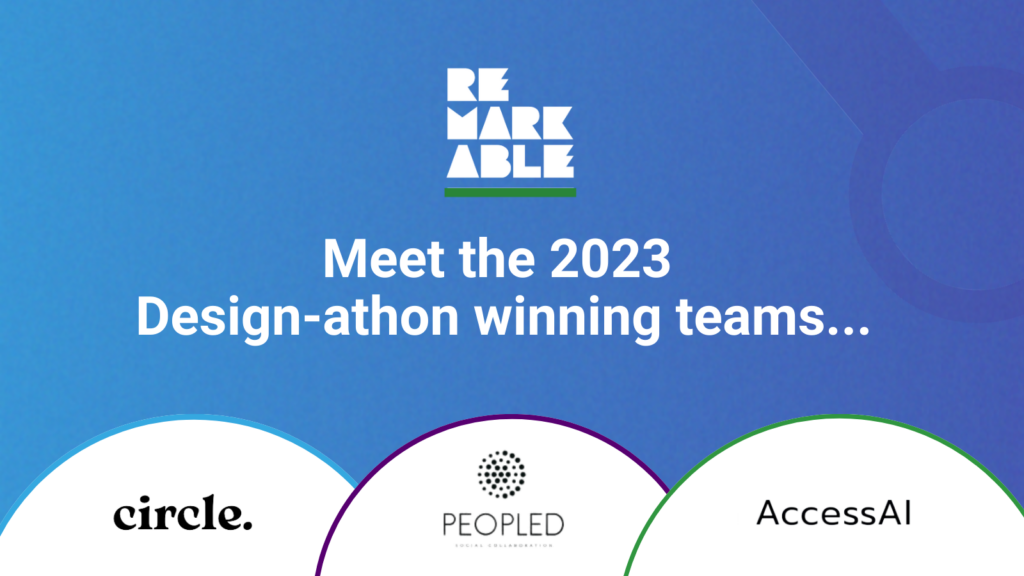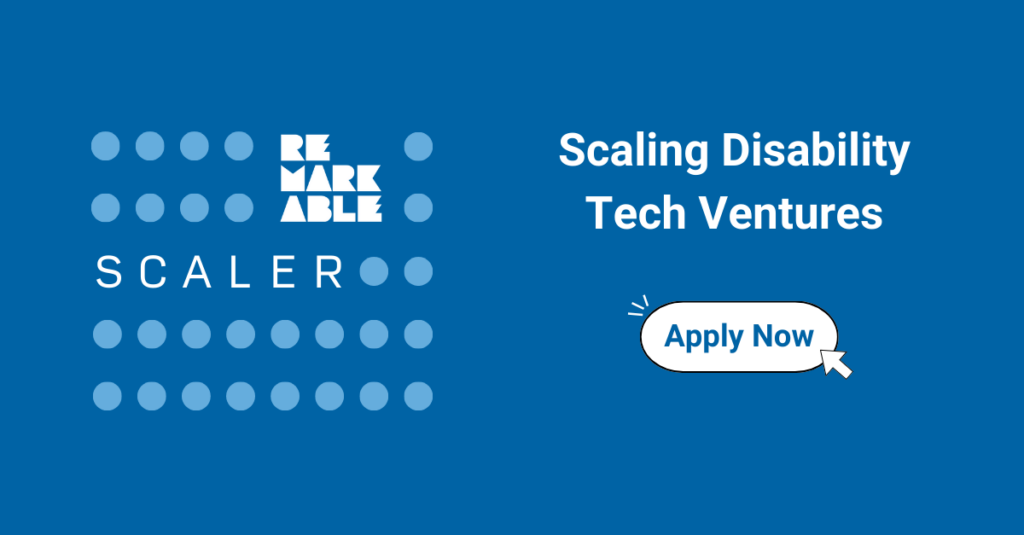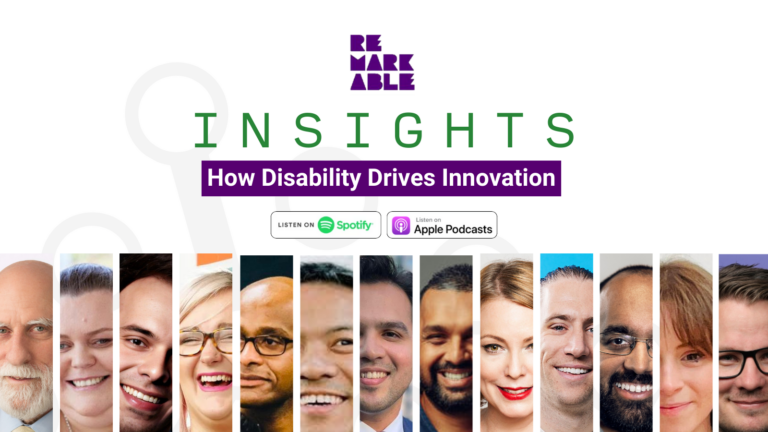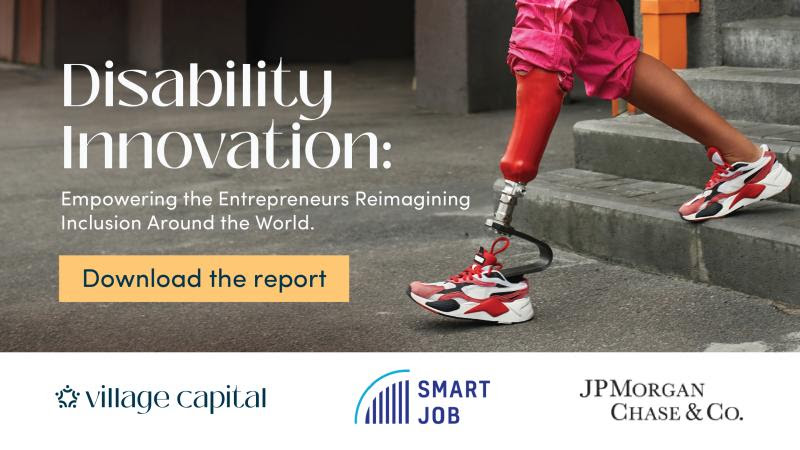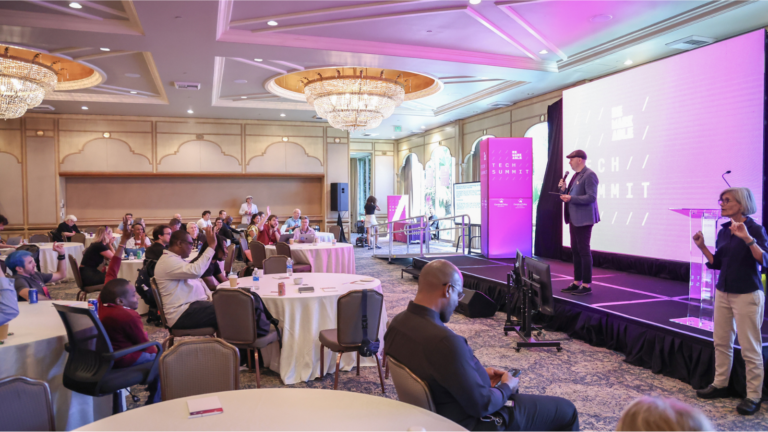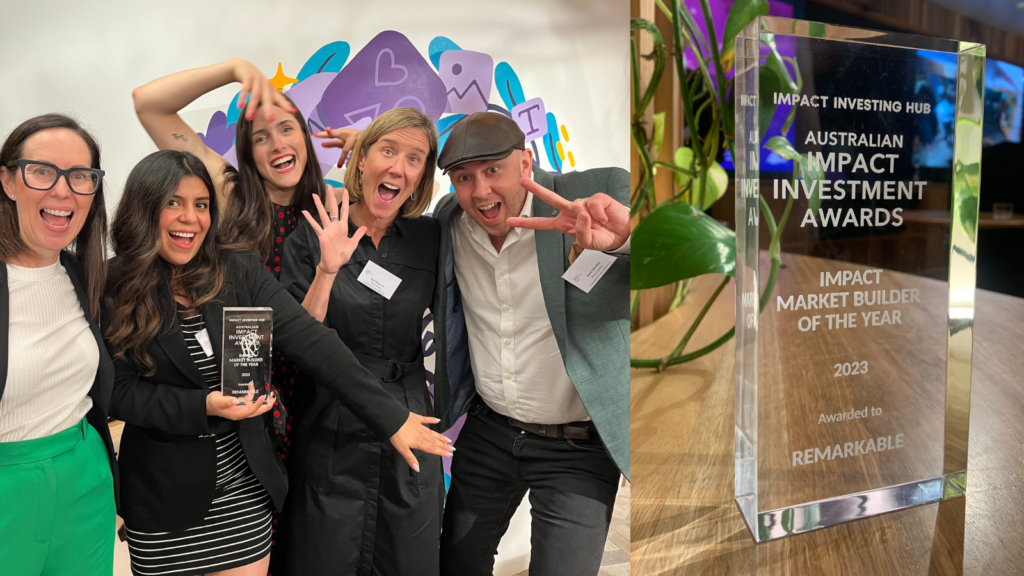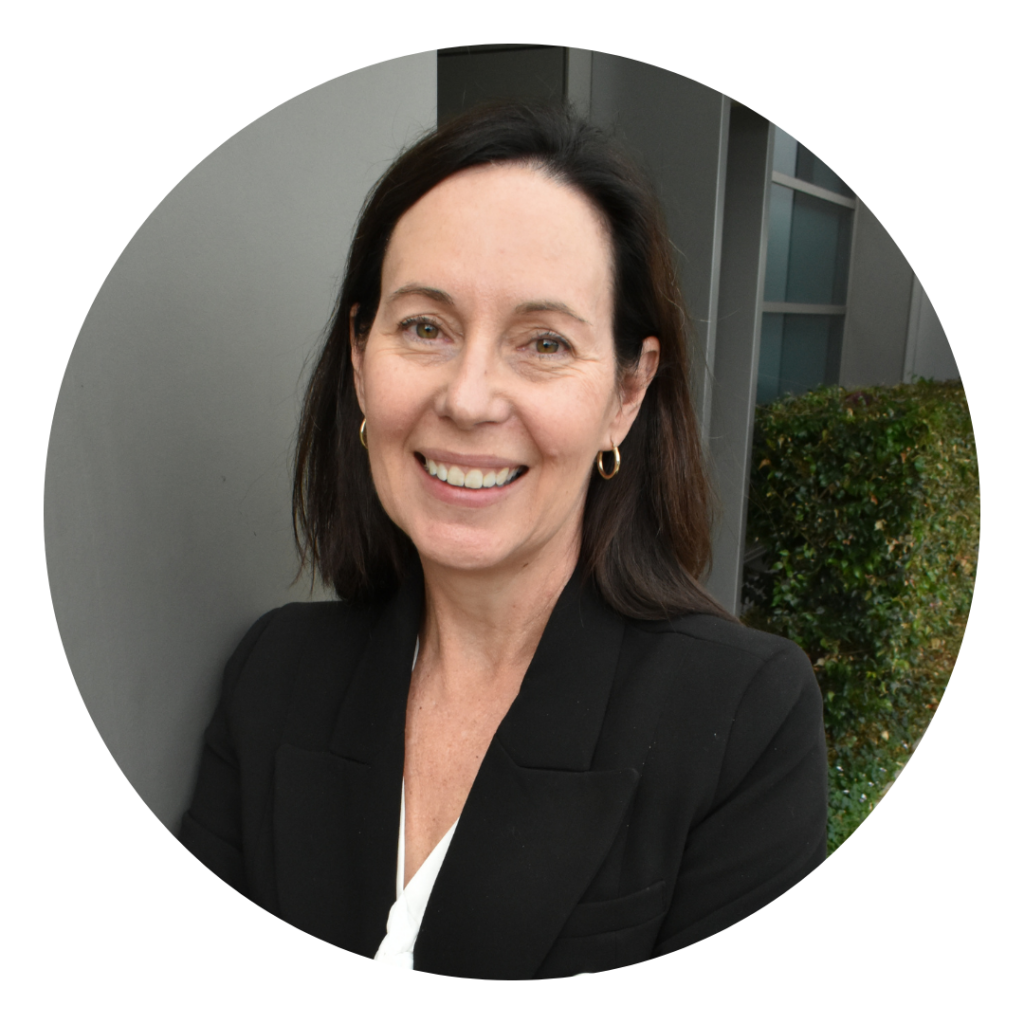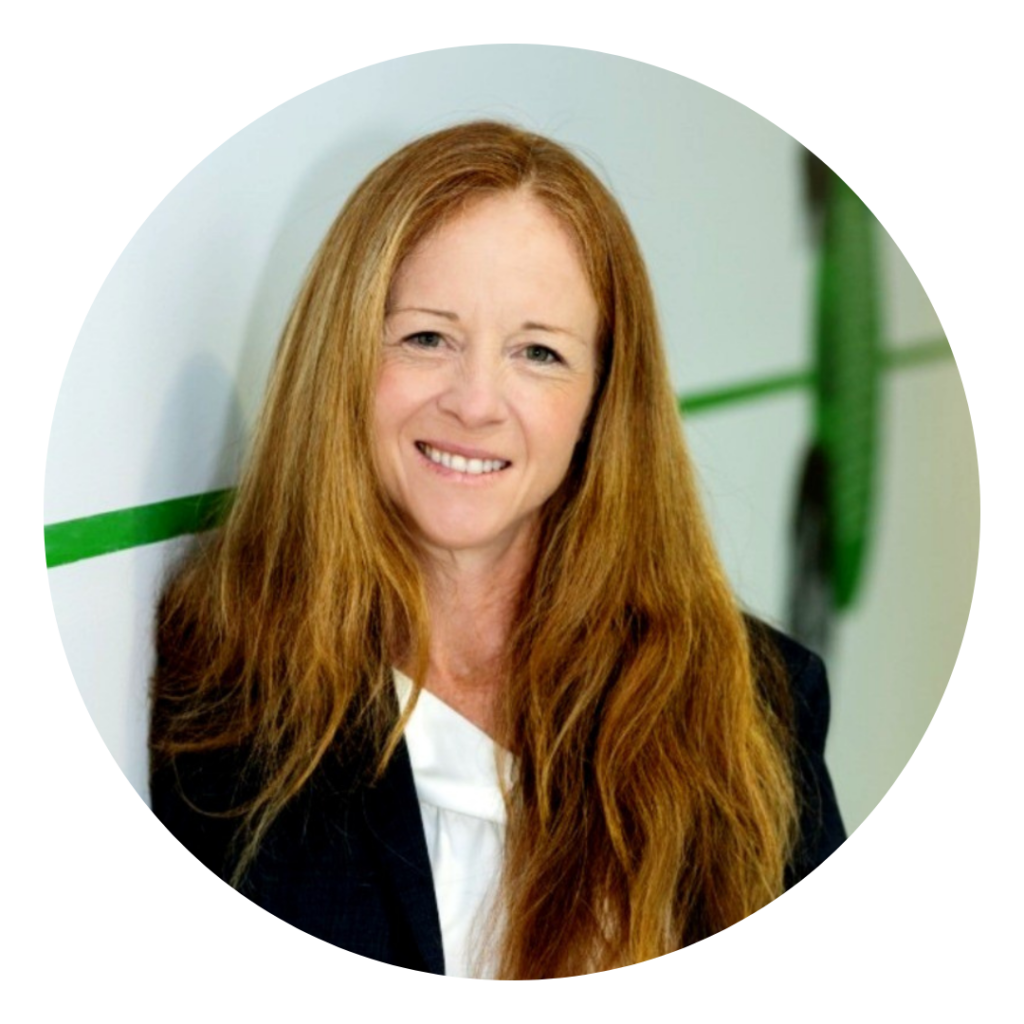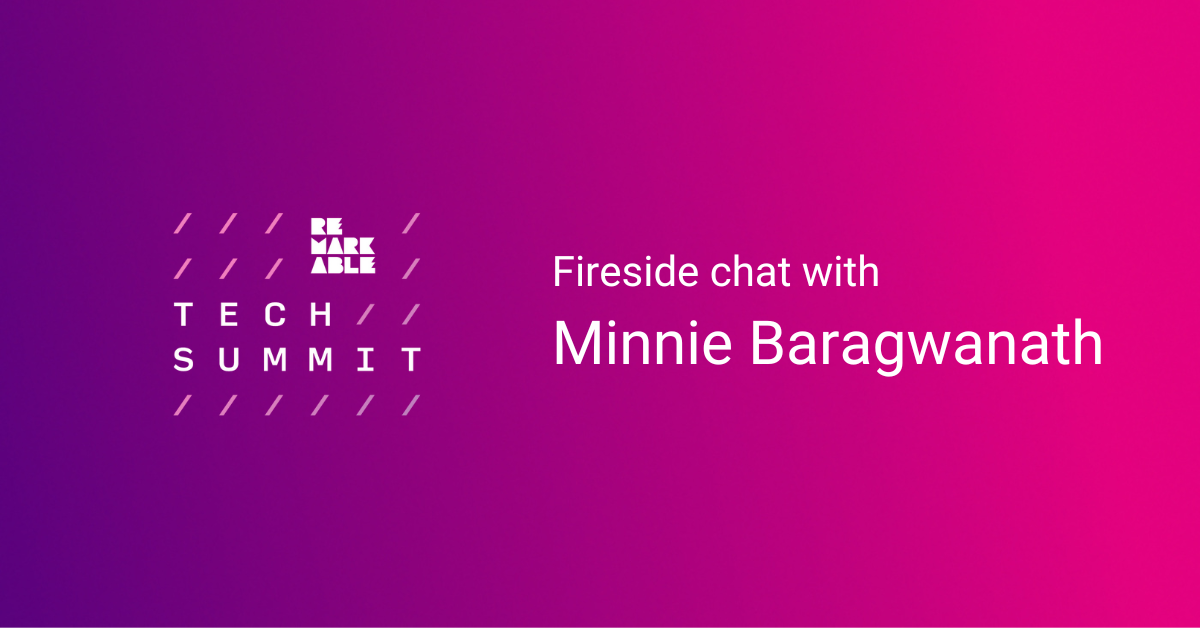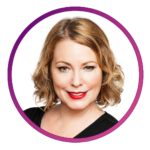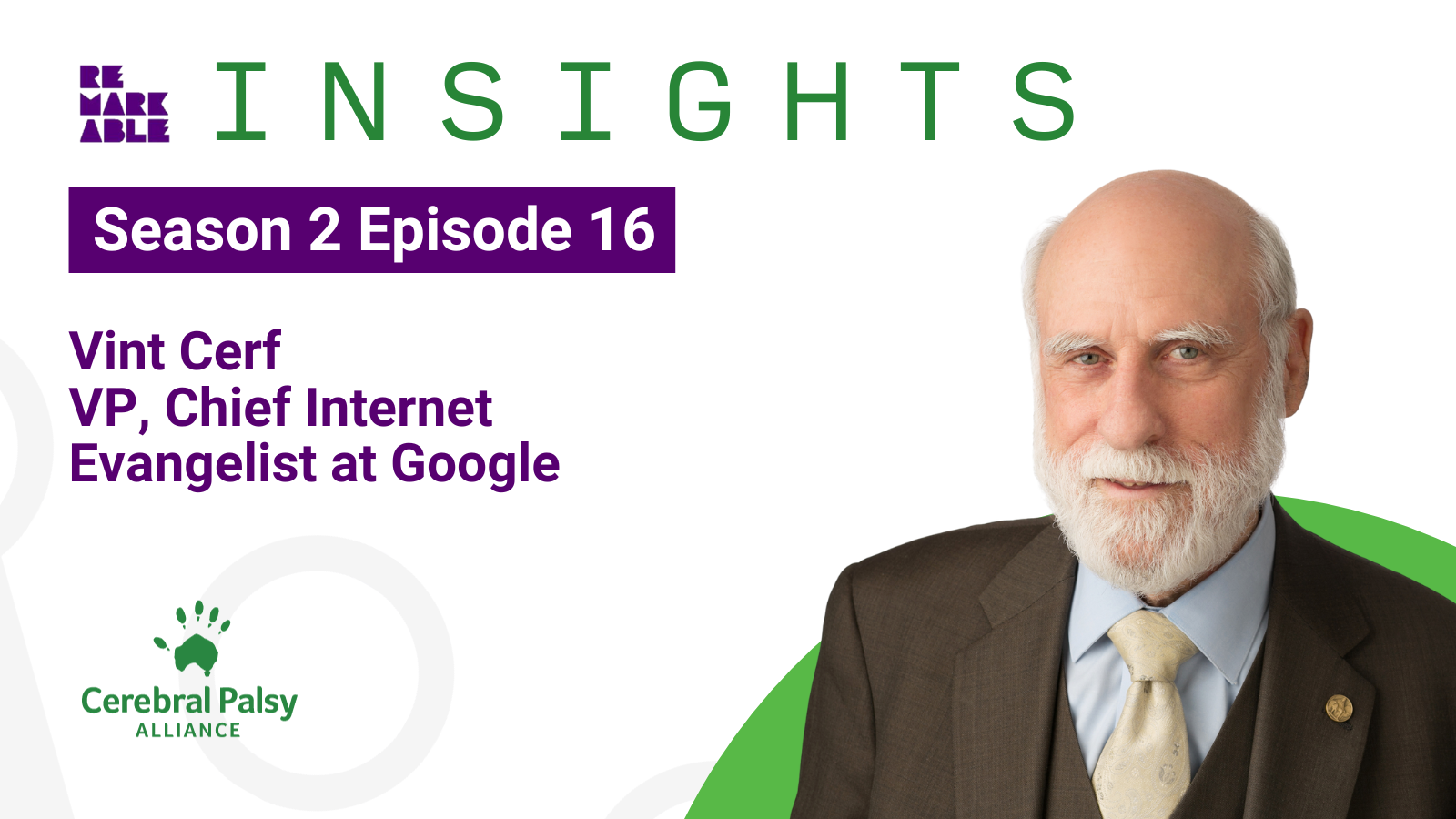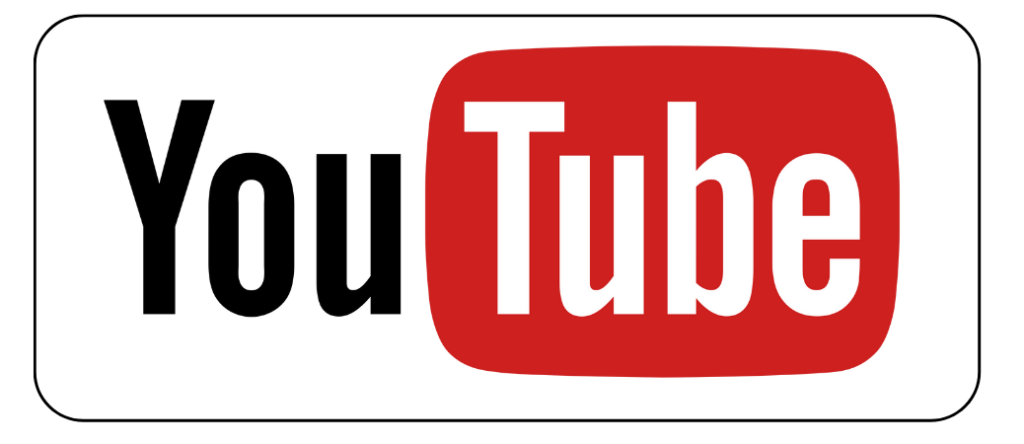The above video is the full recording of the Accelerator AMA Global Startups, it includes sign language interpretation in Auslan, closed captions, with a transcript below.
Transcript
[00:00] Music starts
[00:08] Voiceover
Many of the greatest technological advances enabling the world right now were originally created by and for people with disabilities.
Remarkable exists to amplify those innovators, to help transform their ideas into revolutionary tools whose benefits are felt universally. Because technology cannot only drive inclusion and equity for people with disabilities, it can do it for everyone.
[00:56] Music
Together we’re unstoppable. Together we’re unstoppable.
[01:10] Voiceover
Remarkable Disability Tech amplifying every human’s potential.
[01:18] Emma Earley, Remarkable
Hi everyone, thank you for joining us. I’d like to begin by acknowledging the Traditional Custodians of the lands on which we are gathered today and for me that’s the Gadigal and Bidjigal peoples. I pay my respects to Elders past, present and emerging, and we acknowledge and respect their continuing culture and contributions, and we believe we are better together. Thank you so much for being here. It’s the Remarkable Accelerator Ask Me Anything for the Global cohort 2024, I’m so excited.
I’m Emma Earley and I’m the Head of Acceleration programs here at Remarkable. I’m a mid-30s half Filipino woman with long brown hair and I’m proudly wearing a black shirt with a white Remarkable logo. And a note on accessibility for today, this event will have live closed captions that can be accessed in your Zoom toolbar. We also have two wonderful Auslan interpreters joining us and the recording will be available next week with a full transcript.
So what we’ll go through today, a little bit about Remarkable for those of you unacquainted, a lot of detail on all of the benefits that you’ll get from joining our Accelerator program and then some detail on what startups we are looking for and how you can craft a successful application to stand out. And then we’ll throw to you for the opportunity to ask some questions. But to begin, oh actually I’ll make a note if you have questions based on what we’re saying as we go please pop them in the chat so we can try to answer them relevant to what we’re saying but there will also be the opportunity at the end for you to ask other questions. But first for those of you who haven’t met him yet I’d like you to meet Pete Horsley founder of Remarkable.
[03:03] Pete Horsley, Remarkable
(cough) That was terrible start, hi everyone my name is Pete Horsley. I’m today wearing a blue shirt, a blue jacket, a brown hat and some black rimmed glasses, I’m a white 40-some male. It’s really great to have you here and really we’re wanting to answer your questions that you might be able to put in your best forward as you apply for the Accelerator program in 2024. Remarkable started back in 2016 and it was really our mission was trying to accelerate technology, get technology, into the hands of people with disability. As we started to do that we figured that we needed to try and create the ecosystem that sits around that, so investors, other partners. And so really what we’re trying to do is to see technology that actually creates change, creates a greater inclusion, autonomy, independence, access and possibility for people with disability. Over that time we’ve worked now with over a 100 companies, we have seen them go on to create incredible impact in terms of the work that they’ve done. They’ve created over 550 jobs, served over 186,000 customers and attracted a bunch of capital, millions of dollars of capital. And what we’re trying to see happen is that, that this opens up pathways of support for startups and technologies that are at their very earliest stages.
On the screen there’s a, I guess a sideways funnel, that you can see there that actually has a number of different stages. So right from ideation all the way through to scale. And so we have a number of programs and initiatives that we run as part of Remarkable, starting with kind of really trying to kind of bring home the idea that disability has always been a real driver of innovation and many of you are the next crop of innovators coming through. We have just finished our Launcher program, which is a pre-accelerator program, some of you who are on this call were participants in that this year and perhaps even a couple of years ago when we ran it last. Then we have our Accelerator program and Accelerator program really is around commercialisation and this kind of term that we call ‘go-to-market’ so how do you get your products out into the market and into the hands of people who need it most. One of our newer programs is Scaler, that is for Seed to Series A investment. It’s a little bit of terminology from the startup community but essentially for startups that are in market already selling their product and are looking to kind of scale their growth quite quickly. So we we now have a range of programs and supports that sit around that. So if there are any questions specifically on kind of Remarkable as a whole, this is part of, there is another cohort that we call the US cohort as well that will be operating at the same time, so those two cohorts operate in parallel as well. So if there are any questions certainly let me know and I’ll just open up the chat to make sure that I’m seeing that. Otherwise I’ll hand back to you Emma.
[06:45] Emma Earley, Remarkable
Thanks Pete okay so the fun stuff. What makes our Accelerator unique? I’d like to share some Accelerator Commitments and Operating Principles that Molly, who is my US counterpart, and I have worked on. Importantly the hint is in the name, we will accelerate you and we do also expect you to actively accelerate your startup. We will add value and respect your time. We only want to do things that are helping you achieve your startup’s objectives, not just sort of making you attend something for the sake of it. And on that note we will tailor our programming for your startup so that you’ll receive just in time content and just in time connections. So it’s not about a prescriptive program where week one you must do X and week two you must do Y. And community is also really important as well. So this is how we work as a Remarkable team and how we would like our portfolio companies to work as well and that is building in and with the community. And those communities include people with disabilities, your cohort, the both International cohorts, and within your startup team as well. And as far as our Operating Principles go as I’ve said we build our programming around your startups objectives and we evaluate our success in our ability to accelerate you in those particular areas. Then kind of universal and unique to Remarkable is that we want to develop your startup’s understanding of accessibility and inclusion and help you on that learning journey. And with that we really want to prioritise inclusive leadership and your team development, so that can include your team dynamics, and helping set you up for the next stage of growth as you do grow and need to build your team as well.
So what do you gain access to? In short: Coaching and Mentoring; Community, Connections and Network Access; Bespoke Programming across 16 weeks followed by Demo Day and Investment, which is exciting but I’ll go into a bit more detail on each. So Coaching and Mentoring across the 16 weeks ,each team will have a dedicated one-on-one coach who will help set your objectives, help you stay accountable, unblock and troubleshoot any issues you have and connect you to what you need. Then as needed you, that can be supplemented with mentors who are subject matter experts in a particular strategic area that is relevant to you and you can tap into the hundreds of mentors in the Remarkable community. So that is really focused on just-in-time connections to what you need, when you need it. And this is an image of a few of our mentors on the slide. Community and Connections really valuable to help you as founders and startup operators through the program but also help your startup’s journey. So as Pete mentioned we have two international cohorts operating in tandem. I’m leading the Global cohort and that’s for Global startups based outside of the US. And Molly will be leading the US cohort and that’s solely for startups based in the US. You’ll also be able to tap into our Remarkable team, our great network of Coaches, Mentors and Alumni. You’ll be able to access, as relevant, Cerebral Palsy Alliance, our partners and industry contacts, disability community and the wider startup ecosystem as well. So we have a really extensive and engaged network and they are primed to support you on your next stage of growth. So how does our bespoke or tailored programming work? Once we have selected the teams, before the Accelerator kicks off we have one or two Deep Dives per team and that is to really understand your needs, surface any challenges or gaps that you might have, any roadblocks and opportunities for development. And from those Deep Dives we’ll design the programming tailored to your startup’s needs. Then the Accelerator itself runs for 16 weeks from the 17th of June until the 4th of October. So each week you’ll have one-on-one coaching, and then supplement it with mentoring as needed, not necessarily weekly unless that’s really something that you need. Then each week we’ll have two 75 minute sessions, probably on a Tuesday or and Thursday and those 75 minute sessions will be designed from a menu of programming which I’ll explain on the next slide. You’ll have access to Industry Events and other in-person events. And then after the 16 weeks we have a Finisher to sort of wrap up the program with your cohort and prepare for Demo Day, which is currently planned for the 15th and 16th of October in Sydney. Okay so our Menu of Programming. It’s just-in-time content, non-prescriptive. So over those 16 weeks on a Tuesday and Thursday, mid-morning Sydney time, most likely there’ll be a range of sessions that could look like, workshops, masterclasses on particular strategic areas that you they relevant for you, could be a Q&A with a founder, a peer-to-peer learning session or mastermind, could be a panel with investors, could be a Remarkable Roundtable with stakeholders in the disability community or even pitch practice sessions. So some weeks it’ll be the whole cohort working on the same strategic area and will align where possible, but other weeks it might be individual teams or smaller groups working on one of these things, and other weeks it will actually be the full international program of both cohorts attending one of these sessions. So you only need to attend what is relevant to meeting your startups objectives in line with our commitment to add value and accelerate you. But once we do work together in that Deep Dive to design your tailored programming, the expectation is that you are committed to attend all of those sessions. So the time commitment that that looks like is approximately 7 hours a week for Accelerator sessions, coaching, any supplementary mentoring, and deep work you need that week. But the weeks that we do have in-person events it will be a little bit higher than that. So just bear that in mind as you plan. We’ve got some really exciting, and hopefully really useful events and networking opportunities for you. So towards the start we have what we call Kickstart and that is an immersive in-person event with our cohort. Up to you if you’d like to stay with us in our Airbnb or whatever other accessible accommodation that we book. You can also stay in your own accommodation, if preferred. But that’s really for us to come together, set objectives, collaborate with your cohort, your coach and within your own startup team. So if possible your core team should be able to attend that and that’s planned to be in person in Sydney, 2nd to the 4th of July. Then halfway through we have a mid-program catch up with the cohort and you’ll also have the opportunity to exhibit at no cost to you in the Remarkable booth at the Sydney Disabilities Expo, so you can showcase your product to potential customers and make connections. So all startups are welcome to attend that but that’s not required attendance. Then once we’ve finished up the program, two weeks later, we have what we call Finisher and Demo Day. So we’ll come together, wrap up, get prepared for Demo Day and at Demo Day we plan to invite industry, investors, potential partners but we’ll work with you to tap into our network because our aim is to get the right people in front of your startup. We also will plan four sessions across the 16 weeks where it is the international cohort coming together. Okay a note on program accessibility. So we’ll ensure that our program meets your accessibility needs so we’ll work together prior to the start to ensure we’re best serving those accessibility requirements. And I will say that some programming is designed for in-person attendance but we can of course make accommodations for accessibility there. Global cohort programming is will operate in Australian Eastern Standard Time and as I’ve mentioned a couple of times it’s currently planned for a Tuesday and Thursday mid morning Sydney time but the final times will be determined once we know that cohort and we’ll do our best to align with everyone’s availability. But do bear in mind it is Australian Eastern Standard time for some of you outside of the time zone. We will be able to record some of the sessions but they are designed for live attendance wherever possible. The program is also designed to be delivered in English and, as required, sign interpretation will be available. And a quick note on our coaches and mentors. All of them speak English but some of them are bilingual and multilingual, so if there are language needs there we can do our best to match up. Okay Investment. So what that looks like for the Global cohort is $100,000 Australian dollars for 6% Equity but as we navigate this process we are equipping you with some legal sessions. So to ensure you have full understanding we’ve organised a legal session with Legal Vision to go through the Accelerator agreement and our suggested shareholder agreement. That will be as a group and then we’ll give you access to one-on-one legal advice with a Legal Vision lawyer for up to four hours. And that’s just between your startup and a lawyer, it doesn’t include any of the Remarkable staff team in those sessions and it will be at no cost to you. We really want to help you navigate the investment process and understand your rights and obligations there, and you’ll then have an opportunity to meet with Pete. And this is all before you sign anything, so we really want you to to be informed in making those decisions. Okay so before I move on to the ‘what startups we’re looking for’ in application process, does anyone in the live session have particular questions about program inclusions and how that operates? I’ll just pause for a moment you can put a digital hand up or type in the chat. My chat box has just disappeared Pete, am I missing anything in the chat?
[17:34] Pete Horsley, Remarkable – question from chat
It’s just a question about could you explain how the equity works? So so for companies coming into Remarkable we do have we asked that you have a company structure where you’re a for-profit organisation. So if you’re not-for-profit then we, unfortunately at this time, aren’t working with not for-profit companies we’re working with for-profit companies. And so if you’re not familiar with kind of setting up a shareholders structure for your business, that’s where you can get some support from Legal Vision. So they’re at an arms length to us, so they’re operating on behalf of you and your startup. They are not operating on behalf of CPA or Cerebral Palsy Alliance or Remarkable, they are are there to really help you navigate that process. So in doing that we give, we invest $100,000 into what is a generally a fairly early stage company, and as part of that as well you get all the value that Emma has spoken about of: the mentors the coaches, who we pay, as well as access to our networks and access to all the experience that we bring around Disability Tech that we’ve been kind of focused on for the last 8 years. So it is worth much, much more than just the $100,000 but the $100,000 is cold hard cash for the Global cohort. It is a little bit different for those of you, I know we’ve got some people here from the states as well, a little bit different there so. And I’m just seeing some of these other questions come through.
[19:23] Emma Earley, Remarkable – question from chat
So some of the other questions I will answer in terms of sort of Eligibility and Stage. I wonder if, maybe Pete you can answer this one? If an applicant has already raised funds at a valuation slightly higher than that of Remarkable’s is it possible to negotiate?
[19:39] Pete Horsley, Remarkable
We can. So if that has been a recent raise and it has been with sophisticated investors not just friends and family then we can certainly have a look at that and open to that.
[19:54] Emma Earley, Remarkable
So the other ones (questions in chat) hopefully I will answer in the next little section because the first part was about program inclusions but if I don’t I will make sure to get to them.
So ‘what startups are we looking for’? And please continue to post your questions in the chat. So a note on Eligibility. So obviously Disability Tech, that is what Remarkable is here to accelerate. So your startup needs to clearly benefit people with disabilities directly or indirectly and that can include disability, health and aging spaces as well.
So Stage. Having a bit of a zoom issue here there we go. So ideally the Stage we’re looking for is post-product and post-revenue, but if you are an earlier stage med tech product we really encourage you to apply as well because we acknowledge the longer path to market in particular. If you feel like you might be in a bit of a grey area, I’d really encourage you to apply. But if you are very much earlier than that, perhaps next year’s cohort of Launcher might be a better fit for you. If you really are unsure feel free to send us an email.
Okay Business Structure. Pete mentioned before, for-profit and then also for-purpose is very important to us but a not-for-profit structure unfortunately is not eligible for our Accelerator program. Okay you need to be Growth Ready, it’s all about growth here. So that means your tech needs to be able to scale, to help more people.
And finally your innovation needs to be ‘remarkable’ and what does that mean for us? So we are seeking innovators who are focused on positive impact and groundbreaking innovations.
Okay so, ‘Who in particular are we looking for’? What types of startups and what do you need to know and have. So a clear solid, understanding of the problem and how you validated that. So clearly describe in your application the problems that you’re looking to solve for people with disability, and how you validated that. This problem needs to be solved and your solution is the way to solve it. Please make sure that you are providing evidence of this, and that could be customer interviews, research statistics or other verifiable data, could be lived experience and subject matter expertise of you and your team members. So the solution needs to be scalable and Remarkable. So a strong solution that solves that problem. And tell us why your technology is remarkable – why, how are you pushing boundaries? We’re not looking for copies with the tiniest of tweaks of things that are already in market, we’re looking for unique innovations that can really make impact here. And then your team. Why are you the right team to solve this problem? Let us know. If you happen to be a solo founder let us know how you manage all of the things that go into a startup. Do you utilise contractors or are you looking for a co-founder maybe or how do you go about managing all of the the moving parts and why are you the right person or people to do it. We’re also looking for people and teams that are coachable, willing to get out of your comfort zone and those with a growth mindset. We’re not after people who sort of think they already have all of the answers, like let’s work hard and figure it out together. And then Program Fit. So it needs to be aligned and engaged. So we want people who would love to be active participants in our Accelerator program, building in and with community. Someone who actually wants to partner with us at Remarkable as your support team, almost like an extension of your team. And I will make a note here if you are only looking for funding, that’s perfectly valid, but it’s not the right fit. We want people who want to be actively involved in our program and within the cohort. Importantly each of these things aligns with the application questions, so please bear that in mind. And this on this slide, this is an image of Cheryl Gledhill who is an Accelerator alumna and she’s now a mentor, a coach and a masterclass facilitator for our programs and currently works at Culture Amp.
Okay so ‘How to craft successful applications’. I mentioned a little bit before about those specific areas that will include but please, please, please it sounds so simple read all of the frequently ask questions and application questions before you hit submit. We are asking all of the questions for a reason, they have been consciously crafted and reviewed. And use plain English, explain it to us simply and clearly. We have diverse judging team from different backgrounds, different neurotypes and different sector expertise, so explain it simply and clearly. Don’t skim over anything, another thing that might seem a little bit simplistic but answer everything and give everything care. We score each category numerically, so that’s important to note. So don’t only focus on one area that you think you might be particularly strong and not give each of the other questions and sections the same love and energy and attention because we score each category numerically. But with that, bear in mind that long answers don’t necessarily mean better answers. If you can explain things concisely it can often demonstrate that you have a clear understanding and a better handle of your startup. And then finally be authentic and honest. You don’t need to answer what you think we want to hear, be authentically you. And I will make a note there that if you feel like you might have a bit of a gap in one of the questions or one of the areas, I’d encourage you rather than to leave it blank or omit an answer, acknowledge that gap acknowledge that area for support and growth because we want people who do have that sense of awareness and are wanting to grow as well.
Okay onto the ‘Application Process’. For those of you that haven’t logged in yet and seen it. So we have built our own custom portal through Glide and you access that on our website Remarkable.org/accelerator or just navigate to the Accelerator page and click apply. So it’s a three stage process. Step 1 is to develop your personal profile. To actually get there you’ll be emailed a PIN, so just bear in mind check your spam or clutter folder if you don’t get that PIN but it will give you access, you don’t need to create your own password though .Should only take up to 5 minutes and then Step 2 is to create your startup profile and give us some general information about your startup. That should take up to 20 minutes. And then Step 3 you need to select the Accelerator program. We’ve built the portal so that you can apply for multiple programs so make sure you’re clicking Accelerator in Step 3 and then that’s where you’ll answer some of those more detailed questions. And that should take up to 20 minutes. So you can see here that it might be up to 45 minutes to go through the whole process. So if you are in that grey area I don’t think it is too honorous if for you to really you know throw your hat in the ring and put yourself up for consideration if you feel like you might be on that grey area of eligibility. Please bet on yourself and be part of it. But obviously it might take a little bit longer for you to craft your responses and refine them as best you can. Okay we’ve got a couple weeks, two and a bit weeks, applications close on Monday the 29th of April. And I will make a note here that the application portal can be optimised for screen readers, there will be a toggle at the start to click to optimise for screen readers and the structure of the questions will change slightly to be more accessible there. But you can also head to the website frequently ask questions page if you’d like to download a PDF or Google doc version of the main questions, if you wanted to draft your responses before logging into the portal. I make a note of our diverse judging team. We will have a mix of genders, ethnicities and lived experience with disability and sector expertise, that’s really important to us.
Okay let’s move on, to you. We’ve got a couple of frequently asked questions that we’ve been asked before and I’ve got some key dates to go through but why don’t I just see in the chat first. Maybe I’ll go bottom to top. So ‘How many places are there in the Global cohort and are teams of founders prioritised or preferred over solo founders?’ So the first answer to your question is around about 5 for the Global cohort is the number of teams but we really will look at the applications and we want the right people and the best startups that are aligned with the program. And in terms of solo versus group founding teams. Pete I don’t necessarily think it’s one or the other it’s about whether the team, irrespective of how many, is the right team.
[29:29] Pete Horsley, Remarkable
Yeah I think that that’s a great response like it’s we don’t have a you know a bias against solo founders. We’ve worked with solo founders before, and again it’s are you the right person solving this really big problem. That’s the thing that we’re kind of looking for the most. And do you have the ability to, kind of, draw around you others who believe in this mission as well. Like that’s, they’re the kind of key things…as I do that my phone is ringing…So yeah they’re the things that we’re probably looking for. So no preference of solo versus team.
[30:10] Emma Earley, Remarkable
Okay another question here is [Question] ‘What kinds of areas of work are you looking for? Mine is focused on edtech for a school age audience?’ [Answer] So critically it needs to impact people with disability directly or indirectly. So edtech could impact people with disability directly or indirectly, so I’ll leave that for you to determine but it’s not a particular edtech ‘is or isn’t’, it would be is your solution serving people with a disability. Sorry let me just scroll up. ‘Can it be (just for the benefit of people watching the recording, even though some of the questions have been answered by Pete in the chat I will speak them out loud)
[Question] ‘Can it be an existing company, established 10 years ago but hasn’t traded much’? [Answer] Yes, simply yes. ‘If an applicant has already read’ oh we answered that one before.
[Question] ‘If we are pre-revenue when will the equity kick in? Mine is private limited for-profit.’ [Answer] So it’s a fixed equity round, Pete has written in response, it kicks in when the program starts. It might be relevant in terms of your cash flow planning that it is about Week 3 of the program which starts the new financial year in July when the funding will actually be transferred. So funding won’t be transferred week 1 of the program, it will be from week 2 in the new financial year.
[Question] ‘What kind of traction are you looking for?’ Thank you for the question. Pete do you want to take that one.
[31:46] Pete Horsley, Remarkable
[Answer] Yeah so I guess we are looking for kind of a product in-market that’s starting to be sold. We say on our Frequently Asked Questions as well, that if you’re a Medtech device and aren’t quite at that stage of selling to customers yet that that’s okay. And we do make some allowances for hardware technology because we know that (a) there is not a lot of help out there for Hardware startups. So the kind of traction is some early stage validation, of that through some paying customers – apart from what I’ve just said about Medtech and Hardware. That, that’s kind of … so it doesn’t have to be kind of hundreds of thousands of dollars month on month that’s coming in, we’re looking for some early stage traction there that that you’re out in-market, with customers who are wanting to pay for your product. That’s kind of what we’re looking for.
[32:44] Emma Earley, Remarkable
[Question] Okay another question ‘What are previous year’s success rates for applications?’
[32:52] Pete Horsley, Remarkable
[Answer] Yes I think last year we had about, oh gosh, 120 applications some around that and we took kind of 7 I think was in last year’s one. So yeah you can kind of do the math on that.
[33:07] Emma Earley, Remarkable
[Question] ‘What level of involvement will Remarkable have in terms of the day-to-day running of each successful startup once the Accelerator is over?’ [Answer] I think I might talk to during the program ,we will support you but we’re not necessarily like working in your startup per se in terms of the day-to-day running. Maybe that’s just a nuance that my brain is is you know honing in on but we, when I sort of said think of us almost like an extension of your team, not working in your startup per se but supporting you in whatever areas that might be working with you to troubleshoot or unblock, it might be connecting you with someone who can support you, it might be giving you access to content or other resources. And then once the Accelerator is over, again in terms of working on the operating side, not that style of relationship but this might actually be an opportunity to introduce you to Kate Jenkins who is our Head of Community and Partnerships and maybe she can share ways that we are supporting our alumni community.
[34:16] Kate Jenkins, Remarkable
Hi everyone. Yeah we, post Accelerator we want to make sure that we we do keep you in our community because we have an incredible ecosystem of people and I our alumni are my very core to that. So my role is coming to make sure that we do nurture that community more and more. So we’re setting up ways that we can do peer-to-peer learning sessions, community networking sessions where you can meet with others and network online but also in-person. We do the in-person ones a couple of time a year but hoping to get out to more cities to do that over the year. We just recently did one Sydney where we had lots of people turn up. And yeah we also, kind of work out how we can do more, give more value in terms of like developmental learning sessions. So stay tuned for more of that in the coming weeks.
[35:15] Pete Horsley, Remarkable
I might just add as well we’ve got Zara on the call here, as well. So Jen we definitely want to be continue to be we’re… we’re an active shareholder so you know we we don’t want to just say thanks and see you later. We’re… we’re interested in your future success and certainly I think that the thing that Remarkable brings is the power of our network and so I…and others in the team Liza on this call as well. We still have contact with people who are from the first cohort of Remarkable and we are actively supporting them and their growth so we obviously can’t do it as intensely as what we do during the Accelerator program but certainly it is…it’s in our interest to see you succeed, and so we want to see you have the impact that you you’re hoping to have. I hope that kind of answers the question as well. [Emma] Okay another question here, I might keep it for you Kate. [Question] ‘Could you please talk about the kind of mentor support they can receive in terms of their professional expertise?’
[36:30] Kate Jenkins, Remarkable
[Answer] Yeah throughout the program we have incredible mentors within the community. So we have mentors that are like working in like leadership development, oh we’ve got people like we’ve got a mentor that used to head up HR for Salesforce and Apple. You know, so in terms of professional expertise like there’s plenty of people within our community that you can tap into, as well as your coach will be there along the road you know that’s had you, all our coaches have had you know amazing experience, that would be there to support you. So developing you as a leader, you know we we want to focus on that. So whether you’re leading a team or just a a solo founder either way we have a focus on making sure that you’re getting the development that you need. And the coach’s role is really about looking out to the mentor community and seeing who’s who we can bring to you to help you with that support and it’s also you know I’m here to do that as well. So yeah lots of different people in the community that can help with that development.
[37:48] Emma Earley, Remarkable
Right thanks Kate, okay. [Question] ‘What is the process once applications have been submitted following the April 29 deadline?’ [Answer] So we go through through a couple of internal rounds of scoring, to screen the applicants. Then we numerically score them, then we have a selection panel to further short list to the top, however many, that we will invite for an interview. And then once the final cohort is sent offers, that’s when the group legal session, which is currently planned for the 21st of May, will happen. Then those startups will have a week to have those one-on-one legal advice sessions, and then hopefully accept the place and sign the documents by that 31st of May. So that the following week we can start onboarding and the Deep Dive process, and then the the program will will start on the 17th of June.
[Question] ‘Could you explain a bit about Remarkable’s approach to IP and expectations for what stage teams should be at?’ What do you mean by stage in relation to IP – could you clarify that please Michael?
[39:11] Michael
Hi thanks Emma, Pete. For folks coming into the Accelerator program should folks have it already disclosed or should they be looking at working with the Remarkable or team mentors and Accelerator program, to go about navigating that as they look at entering the market?
[39:31] Pete Horsley, Remarkable
[Answer] I think probably the best response to that, nice to see you again Michael, is…so we want to accelerate and work with the company that has the IP. So all the IP is yours. Like there’s no… there’s no kind of question about that, that should all kind of sit with the company. Sometimes there are some interesting structures in terms of kind of IP sitting somewhere and then the company sit over here and then another kind of shell company that sits over the top of some of those things. So we we want to work with the company where the IP sits, solving the problem that is kind of a big problem that we’ve… we agree with you that that needs to be solved. So all the IP is definitely all of the startups. We do ask during the application phase if there are any IP agreements in place, just to kind of make note of those. Again mostly just so that we’re doing our due diligence, in if you’ve had contractors working on kind of parts of things that there’s not going to be some kind of claim over that IP kind of down the track that could unseat a company in some way. So that’s just kind of part of our due diligence process. And then in terms of kind of what stage they should be at before, during and during the Accelerator. Yeah I guess those we do have people within the community that if IP is a particular area of interest for you we’ve got both IP lawyers and kind of people who have worked in Venture Capital with startups that are part of our mentor and coach community as well. So… so yeah we can definitely advise and have other people help you think through that. It’s obviously all of our mentors are giving advice, it is ultimately up to you as the founder of the business to actually decide whether you kind of take on that level of advice as well.
[41:37] Emma Earley, Remarkable
Question in the chat. [Question] ‘Will we get financial support in coming to Sydney for the program events?’
[41:45] Pete Horsley, Remarkable
[Answer] So if it’s an international we do have travel bursaries that are available there. If it’s a domestic then we haven’t in the past so.
[41:56] Emma Earley, Remarkable
[Question] ‘Can you be in two accelerators at once?’ Do you mean two different ones or the two cohorts simultaneously?
[42:05] Audience
Two different ones, like UNSW’s accelerator for example.
[42:12] Pete Horsley, Remarkable
[Answer] Look it I mean that’s… it is up to you, kind of…if you think that’s the best use of your time certainly we understand that startups… there isn’t lots and lots of support around for early stage startups, so I can understand I guess going for various kind of funding sources in in different places. So… and it’s just then and about do you feel like that you have ample time to, kind of, commit to the things that Remarkable requires as well as the other accelerator and be working in your business, like that’s ultimately the thing that you need to do is not just attend things – you need to accelerate your business. And so we try and find that balance between the amount of contact hours that we have, as well as, you know really having time that you are pushing forward on things and that we’re really clear about all of the kind of questions that are coming your way, what are the priority areas that are going to move your business forward the best and the fastest. So I think it’s possible. You probably just need to kind of then figure out.. yeah how am I balancing all of those kind of requirements.
[43:35] Audience
[Question] If there are multiple peoples in the team, you know, you can actually have shared the burden but obviously you say you know, you are right need to focus, so thanks.
[43:49] Pete Horsley, Remarkable
Certainly and you just got to make sure your communication is really strong, as well, across the team. Because if you’re…you know if you have different people, hearing different things from different people, making sure that the communication of that is is really well done within the team I think is important.
[44:04] Audience
Sure thank you.
[44:05] Emma Earley, Remarkable
[Questions] ‘Hey is my company eligible if it has an exclusive or non-exclusive license to the product IP?’ Good question.
[44:14] Pete Horsley, Remarkable
[Answer] That’s a great question Michelle. Yeah like I think, so again it’s… it’s there is nothing that kind of says anything in terms of eligibility around if you have exclusive or non-exclusive license. I guess what we do look for within there is you know, the competitive landscape – do you have a kind of you know a way of competing against others and and winning in that in that world to to make sure that your impact grows quickly. So sometimes an exclusive or a non-exclusive license, both of those things can actually be something that tips in your favour. It can also be something that you’re then wedded to the organisation that you’ve got that license agreement with and so their development is really critical in your own development as well. So there there can be kind of pluses and minuses around that as well. I hope that makes sense.
[45:20] Emma Earley, Remarkable
[Question] ‘Could you please define how much revenue we should be making to be eligible for the program?’ I’m not sure that it’s a specific number, it… revenue is an indicator of traction and validation. So the best way you can validate that, you know, your problem is solving the solution in the right way, that your customers need, is by having paying customers using your product. So that’s why we do ask that, but there does need to be revenue potential and a scalable business model. Did you have anything else to add on that one Pete?
[45:53] Pete Horsley, Remarkable
No I think that’s perfectly answered.
[45:55] Emma Earley, Remarkable
Okay have I missed any? We’ll have a little scan. I will just go onto another slide that has a couple of others (questions) that we’re often asked in the meantime. [Question] So…Is the program only based…only for startups based in Australia and the US? No…but we we support startups across the world. But I will make a note here, that our strongest networks and experience are in the Australian, and then US markets for the US cohort, but if you are based outside Australia and the US we do have networks in other countries but please just make sure you do take into account time zone differences. I…hopefully it’s clear but I think it’s worth saying, Which cohort am I eligible for? So if your startup is based in any country in the world excluding the US, then you are eligible for the Global cohort. And when we say based, it’s not just where the founder lives, it’s where is your… where’s your business registered and where are you mainly operating – that’s what we mean by where is it based. And then the US cohort is solely for startups in the US and it works on US Eastern Standard time. Is the Accelerator a full-time commitment? So your participation in the Accelerator time is not … as I mentioned before … expected commitment each week will be around about 7 hours and that is mostly online but the weeks that we do have the in-person events, and maybe some other weeks when like when you’re preparing for Demo Day it will be higher than that. I will make a note though that we’re probably optimising for teams that are working full-time on their startups. We don’t want this to be something that sort of sits outside of what you’re working on your business, we want it to be embedded in how you’re already working on and growing your startup. Yeah that’s actually the last of the very common FAQ’s that we have. Have I missed any in the chat? Please point out somehow in the chat, with a digital hand up or come off mute, whatever is available to you.
[48:11] Liza Maclean, Remarkable
Emma, I think Vinya had an extra question just around disability expertise of the sort of mentors and coaches.
[48:18] Emma Earley, Remarkable
Thank you…I can’t see the question but to answer that we do have a diverse range of people in our network with a lived experience, with a range of disabilities. We do also have networks within disability communities that we can connect you with. So it is a combination of network access and collaborating directly with people with lived experience with disability.
[48:50] Pete Horsley, Remarkable
Maybe just one other thing to add to that, is that Cerebral Palsy Alliance is also part of something called The Alliance 20. It’s a network of, it’s actually now about 25 of the largest disability service providers in Australia, and we have relationships in into some of those organisations as well. So and we have people in the team that have, that have been part of the disability sector for more than 20 years or 20 years. So…so yeah there is some deep expertise there around the disability sector. Vinya?
[49:35] Audience
[Question] Yeah so basically I’m a special educator, I worked for a long time in California and I came back to India to work on setting up a venture. So … the mentorship I would need would not necessarily be from you know people with expertise, just in terms of disability, but people who working on a venture you know. So like a combination of people who might have run businesses, so they really understand the branding positioning part of it.
[50:08] Pete Horsley, Remarkable
Yeah definitely and the other thing to kind of mention as well, is that a couple of years ago we set up the +N network, or the Inclusive Innovation Network, which is a global network of other startup acceleration programs that are in different parts of the world, and we have strong partnerships with AssisTech Foundation in India, who understand that kind of network really, really well as well. And we’ve got different kind of connections in different parts of the world, as well. So Africa, the UK, India, China, New Zealand, Canada as well as US as well. So we can tap into that expertise that kind of really is, you know some of that… that global market intelligence I guess, that that hopefully is relevant to startups as well.
[51:08] Emma Earley, Remarkable
Okay I can’t see any other questions. Hopefully that has been useful for you, to help you craft your amazing applications for your incredible startups, that I’m sure even if you’re not part of this particular cohort at this time, will go on to make incredible impact in the world. So thank you first of all for working on that. Thank you for joining us today. All of this information that I’ve shared should exist on the website. I don’t think there’s anything outside of that but this recording, if you did want to go back and get the notes again, will be available as a blog next week. We’re aiming for Monday but we do need to make sure that there is a transcript. And my counterpart will have a US cohort one with ASL and it does take us a little bit longer to ensure that the recording is accessible to our audiences. So maybe Monday, maybe Tuesday it will be available as a recording. If you did have any other questions please send us an email our details are on the website. 29th of April is when applications close and it’s automated, the portal will close. So you won’t be able to sort of submit after the timeline because the button will not work. So thank you so much for joining us. Good Luck. Oh is there did I miss another question.
[52:36] Pete Horsley, Remarkable
So it is 11:59 p.m. Australian Eastern Standard time is the time that it actually closes on the 29th. So you need to look up Australian time at 11:59 p.m. After that it, it does switch off.
[52:52] Emma Earley, Remarkable
Right thank you so much for joining us. Take care and I cannot wait to see these applications. Have a great week. Bye.
